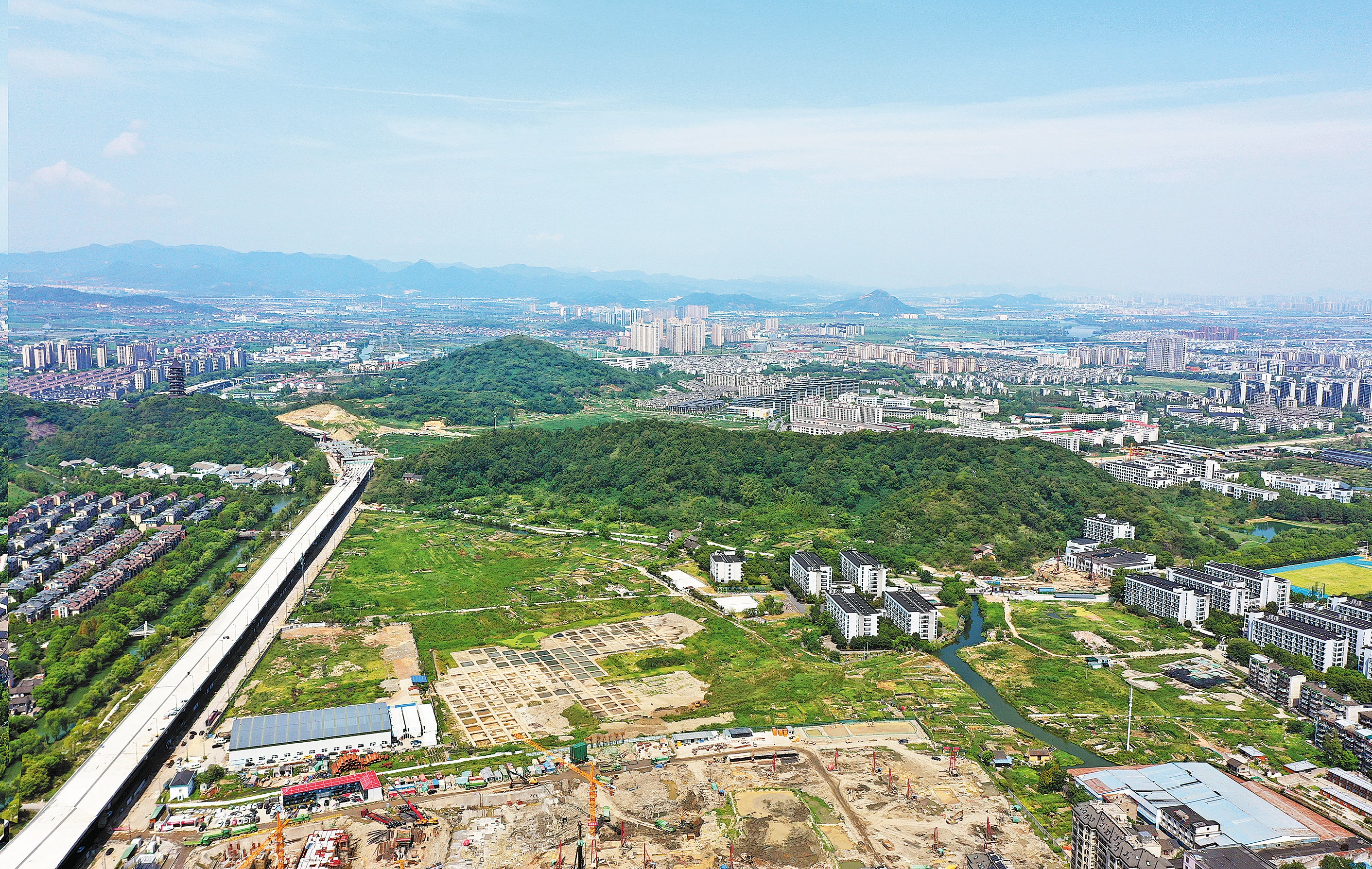Key findings unearth a tale of fascination
THE ARTICLES ON THESE PAGES ARE PRODUCED BY CHINA DAILY, WHICH TAKES SOLE RESPONSIBILITY FOR THE CONTENTS

Archaeological discoveries in Dahutou and Nanshan in Yuecheng district, Shaoxing, Zhejiang province, have shed a fascinating light on daily life in the Eastern Zhou Dynasty (770-256 BC).
This is especially meaningful for the study of the ancient capital and the culture of the Yue State during the Spring and Autumn Period (770-476 BC).
“Two wooden oars were unearthed from the relic site of Dahutou, which is the first wooden oar from the Eastern Zhou Dynasty unearthed in Shaoxing, providing materials for the study of its water town,” says You Xiaolei, director of the Shang and Zhou Dynasties Archaeological Office of the Zhejiang Provincial Institute of Cultural Relics and Archaeology.
You says that copper and iron casting was well-developed in the Yue State, which was especially famous for its bronze swords. “For the first time, lead ingots from the Yue State were unearthed, providing key information regarding the state’s copper and iron casting process.
“In addition, we found a set of porcelain musical instruments, comprised of three cylinder-like percussion instruments and six others resembling ancient chime bells,” says You, adding that these kinds of musical instruments were generally found in the tombs of nobles of the Yue State.
“This is the first time that a group of musical instruments has been unearthed at a site of the Yue State, providing precious materials for the study of the Yue ritual system.”
Since 2021, archaeologists have also discovered a large number of agricultural clues from the Spring and Autumn Period and the Warring States Period (475-221 BC) at the site. These include rice, rice husks and rice spikelets. It is believed that rice was the main food at that time.
In addition, archaeologists unearthed vegetable seeds, such as those of gourds, as well as plum, peach, persimmon, melon and grape seeds.
“The excavation at the relic site of Dahutou reveals rural settlements of the Yue culture and unveils details of the lives of our ancestors from more than 2,000 years ago, promoting progress in Yue culture research,” You says.
At the relic site of Nanshan, a large number of stone tools were found, as well as ceramics, bronze tools and weapons. Evidence of various types of food came to light, including rice, peaches, plums, grapes, and remnants of cattle, pigs, horses and fish.
It was unexpected to find the remains of deep-sea fish, such as tuna, at this site, says Xu Xinmin, a researcher at the Zhejiang Provincial Institute of Cultural Relics and Archaeology.
Xu says he was also surprised by the discovery of a bronze dagger-axe with a character yue on both sides. It was found in the silt of an ancient river.
“Experts said that the bronze dagger-axe is about 2,000 years old. It was well-preserved without much damage. We can imagine how advanced the handicraft industry and cultural level of the Yue State was at that time,” says Xu.
“The relic site of Nanshan is located in the central area of the Yue State. It is likely to have a close connection with its capital. The findings are a breakthrough,” Xu says.
The excavation has given a unique perspective into life in the Yue State, according to Lin Liugen, a professor from the School of Art and Archaeology of Zhejiang University.
Lin explains that the key findings allow the public to learn how the Yue State created a unique culture, not just the stories of warcraft between the Wu and Yue States and the story of the King of Yue, Gou Jian, who, legend says, “slept on brushwood and tasted the bitter gall” before each meal to remind himself of the humiliation his country had suffered.
Since 2020, archaeologists have successively discovered many representative sites of the Spring and Autumn and Warring States periods, such as the relic sites of Tingshan, Nanshan, and Dahutou, enriching both the archaeological findings concerning the Yue State and the research of the history and culture of Shaoxing.
Fang Xiaoying contributed to this story.
Subscribe to Independent Premium to bookmark this article
Want to bookmark your favourite articles and stories to read or reference later? Start your Independent Premium subscription today.